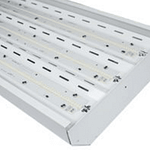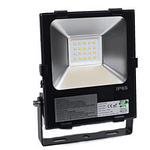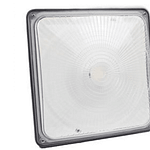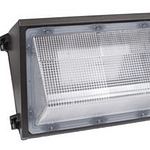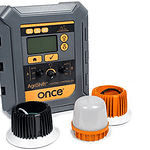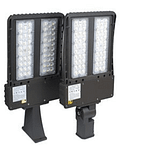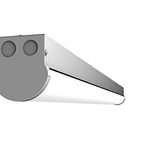What is a Light-Emitting Diode?
To understand light-emitting diodes, we must first look at what a diode is. A diode is the simplest sort of semiconductor device. Generally, a semiconductor is a material with a varying ability to conduct an electrical current. It is common to find semiconductors made of poor conductor material that has impurities added to it. Adding the impurities is called doping.
When looking at the diode in LEDs, the conductor material is usually aluminum-gallium-arsenide (AlGaAs). When using pure AlGaAs, all of the atoms bond perfectly together, creating zero free electrons (negatively charged particles) to conduct electricity. When using doped material in a semiconductor, additional atoms change the balance, either adding free electrons or creating holes where electrons can escape. Either of these changes make the material more conductive to electric currents.
When doping semiconductor material, you end up with two options: N-type material or P-type material. In N-type material, there are extra electrons and has negatively charged particles. In P-type material, there are extra holes, as it has extra positively charged particles.
A diode in this instances consists of a section of N-type material bonded to a section of P-type material, with electrodes on each end. This way, the electricity is only conducted in one direction. With no voltage applied to the diode, electrons from the N-type material fill holes in the P-type material along the junction between layers, creating what is called the depletion zone. To eliminate this zone, you have to get the electrons moving from the N-type material to the P-type material and holes moving in the reverse direction. To achieve this, you connect the N-type side of the diode to the negative end of the circuit and the P-type material to the positive end.
This interaction between electrons and holes has a very important side effect – it creates light!
How Does a Diode Create Light?
Let’s take it all the way back to the beginning: light is a form of energy that can be released by an atom. Particles, called photons, are the most basic unit of light.
Photons are a result of moving electrons. Inside an atom, electrons move in orbitals around the nucleus. Electrons in different orbitals have different measures of energy. It is common for electrons with greater energy to move in orbitals farther away from the nucleus.
In order for an electron to move up to a higher orbital, something has to boost its energy. Similarly, when an electron drops to a lower orbital, the electron releases energy. The energy released is a photon.
As we mentioned above, free electrons moving along a diode can fall into empty holes on the P-type material. When these electrons drop, they release energy in the form of photons. While this happens in all diodes, you can only see the photons (and the light) when the diode is made up of particular materials. When using a standard silicon diode, the electrons drop a short distance, making the photon’s frequency too low for the human eye to see. This is what is called the infrared portion of the light spectrum. Yet this light has a purpose, such as for remote controls!
To create visible light-emitting diodes, the materials must create a wider gap between the conduction band and the lower orbitals to create visible light. The size of this gap determines the frequency of the photons, or in other words, determines the color of the light. Depending on the type of materials used to create LEDs, they can be used to create infrared, ultraviolet and all the colors of the visible spectrum in between!
What are the Light-Emitting Diode Advantages?
All diodes create and release light, yet not all do it effectively. Light-emitting diodes are manufactured to release a large number of photons outward. Plus, they are housed in a plastic bulb that concentrates the light in a particular direction.
So why are LEDs better than traditional bulbs? First, they do not contain a filament that will burn out, making them last much longer. Plus, their plastic bulb makes them much more durable and less prone to breaking if dropped or bumped. Yet we all know the main advantage: efficiency.
Unlike traditional bulbs, which create massive amounts of wasted heat, LEDs create very little heat and a much higher percentage of power is being used to create light. It is also true that per watt, light-emitting diodes output more lumens of light than regular incandescent bulbs, and can last up to 50,000 hours!
Where Can You Find Light-Emitting Diodes?
LEDs got their start long before they hit the lighting market. How Stuff Works calls them the unsung hero of technology! You can find light emitting diodes in digital clocks, transmitting information from remote controls, lighting up watches, forming together to create jumbo television screens or illuminating traffic lights. Today, they do all of this and more by lighting our homes, businesses and streetlights!
Where Can You Find LEDs? At Sitler’s LED Supplies!
Sitler’s is your light-emitting diode headquarters! Not only are we educated on the science behind LED lights, we have the best products available for your home, business or barn! Call us today at (319)-519-0039 or send us an email to learn more or to get started on your LED journey today!
Posted in LED Lighting Basics





